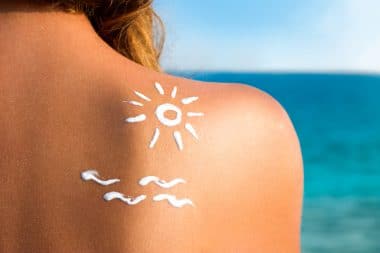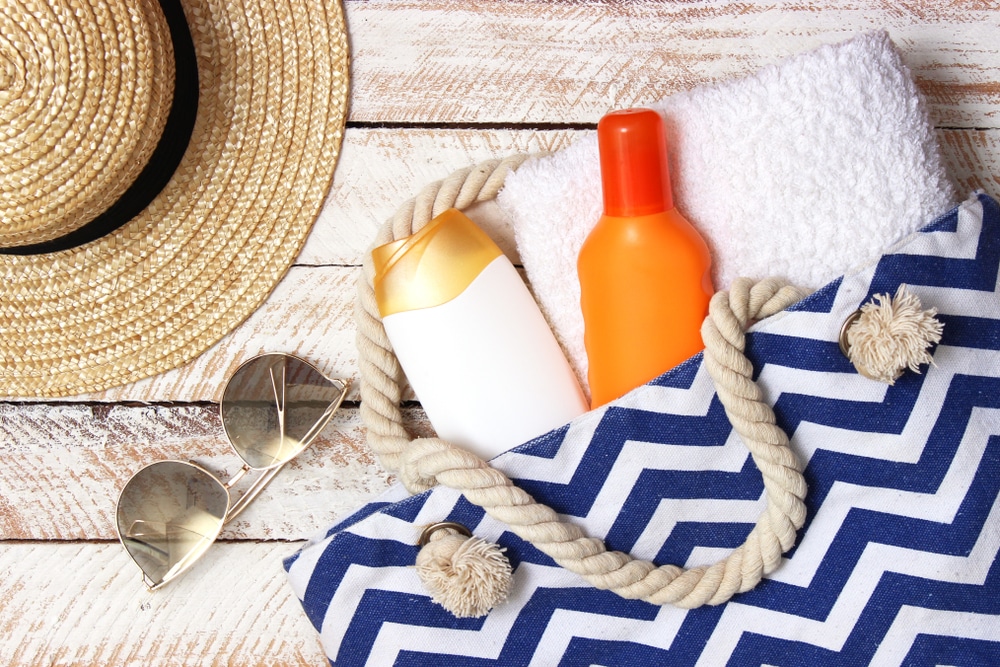Negligence in sun protection can have terrible consequences for the skin. The insidious thing about this is that the consequences are not immediate and are therefore often neglected. Many classify sunburn as “stupid run” and go back to business as usual. But every sunburn is a small step on the way to permanent skin damage caused by the sun – up to skin cancer. And even if it doesn’t come to that, a wrinkled and worn-out looking dermis is almost certain to be the result at an advanced age. Choosing the right sunscreen and using it carefully is therefore much more than a cosmetic measure.
Sunlight as a source of danger
The problem with our most important life-giver, the sun, is the UV content in the light spectrum. It means a direct attack on the genetic material stored in the skin cells. Especially in the case of prolonged or often repeated exposure to the sun, this leads to progressive and unfortunately permanent damage to the body’s own repair systems, which are responsible for repairing such damage caused by UV radiation.
The process is irreversible: the unfiltered UV radiation attacks the genetic material and repair systems at the same time, the repair system can no longer repair the damage to the genetic material, which in turn leads to further damage to the repair system. A vicious circle that would actually have been quite easy to break – if the regular use of a good sunscreen had prevented the damage from the beginning.
Sunscreens work in two ways
Sun protection products are divided into two categories: physical and chemical UV filters. Physically effective sun protection is based on the principle of reflection: the incident sunlight is deflected and reflected back into the environment. This means that they reflect the light before it hits the skin.
Chemically effective sun protection, on the other hand, is based on conversion. These sunscreens contain substances that convert UV light into harmless energy, such as heat.
There are now a number of sunscreens on the market that combine both processes and thus offer optimal sun protection.
Choosing the right sunscreen
A look at the shelves of perfumeries or drugstores or at the websites of online retail presents an almost incalculable number of different product categories and variants. The first thing you notice are the different dosage forms: There are sunscreens, gels, sprays, lotions and balms. However, one legend should be cleared up right at the beginning: There is no “better” dosage form. In other words, creams do not provide better protection across the board than, for example, sprays. The choice of dosage form depends on personal preferences when applying. What really counts when it comes to protection is the sun protection factor.
This measure of the effectiveness of the sunscreen refers primarily to the skin type (between 1 and 6). The second parameter for calculating the right sun protection factor is the self-protection time, i.e. the maximum time that you could spend with your skin type without protection in sunlight without burning. Of course, this requires that you know your own skin type. If there is uncertainty here, the dermatologist or the competent specialist in the perfumery or drugstore department will provide information.
Calculating the right SPF can be a little tricky and depends on how long you want to be in the sun. A person with a medium complexion and skin type 3, for example, has a self-protection time of about 15 minutes. For ten hours, i.e. 600 minutes in the sun, the calculation is: 600 divided by 15 equals sun protection factor 40.
Careful application is key

So it is no problem to spend the whole day in the sun with the right sunscreen. However, this only applies in the event that the agent is used correctly. If you apply your sunscreen in the morning and then don’t take care of it, you are massively endangered.
The skin is the largest organ in the body and is constantly in action. For the sunscreen, this means that the substance takes effect and thus loses its protective function. The sun protection factor only describes the length of time that the product works beyond the self-protection period – when the product is on the skin. Therefore, regular reordering is absolutely necessary every two hours at the latest.
The sunscreen can only work properly if it is applied in sufficient doses. Both the chemical and physical components must be present on the skin in sufficient quantities in order to be able to fully develop their function. If you save money in the wrong place by using it too sparingly, you are not doing your skin any favours.
The sun protection factor should protect against UV-A and UV-B rays. As soon as the time that you are allowed to spend in the sun according to the sun protection factor has been reached, you should get out of the sun, because reapplying sunscreen is no longer of any use here.


